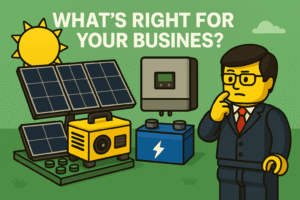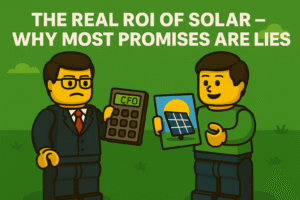The Pain Every Business Feels
It’s not load shedding that’s killing South African businesses anymore.
It’s electricity inflation — creeping up in double digits year after year, quietly strangling profit margins.
And yet, most companies still budget energy costs as if the future will look like the past.
That’s the Eskom Tariff Trap.
Eskom’s tariffs don’t just rise — they compound.
A 12% hike this year, another next year, and suddenly your energy costs are 25–30% higher in just two years.
Worse, they’re unpredictable. You can’t plan, forecast, or set reliable pricing when one of your biggest input costs is a moving target.
And for companies running on thin margins, that’s not just inconvenient but existential.
Here’s Why Most Businesses Are Stuck
- Short-term thinking
Businesses treat energy like an expense to “manage” instead of a risk to eliminate. - Over-reliance on Eskom
Even with generators or small solar installs, most companies are still exposed to tariff escalation. - No strategic energy roadmap
Buying hardware ≠ having a strategy.
The Cost of Doing Nothing
Every year that you wait to act, your breakeven point moves higher.
That means:
- Less cash for growth.
- Lower competitiveness.
- More exposure to energy shocks.
Waiting for Eskom to stabilise is like waiting for the rain to stop in the middle of a flood.
How to Future-Proof Your Business
- Audit Your Exposure
Know exactly how much tariff increases affect your cost base.
If you can’t measure it, you can’t manage it. - Model Different Scenarios
What happens if tariffs rise another 15% next year?
30% in three years?
Smart CFOs run these models before they invest, not after. - Build an Energy Roadmap
Stage your investments: backup → solar → storage → efficiency → tariff negotiation.
The point isn’t to go off-grid overnight, but it’s to build a path to control. - Lock in Predictability
The biggest ROI from solar and storage isn’t savings, it’s certainty.
When you can forecast energy costs accurately, you can price, plan, and grow with confidence.
Eskom will keep raising prices. That’s not a threat — it’s a guarantee.
The question isn’t whether you can afford to invest in energy strategy.
It’s whether you can afford not to.
If you want to protect your business from South Africa’s tariff rollercoaster, start with strategy — not panels.


